18 November 2014
Art and fashion. One of the people who has done most in recent years to create the right opportunities to bring them together is undoubtedly Renzo Rosso. The owner of Diesel has always been convinced that fashion matters when it is creative, irreverent, revolutionary. And that the same is true for art, which Rosso admires, follows, studies and brings onto the catwalk. Rosso has always had a marked propensity to break the rules, and to do so with remarkable results. His career began when, as a young student of economics, he was put in charge of production at Moltex, a company in the province of Vicenza that belonged to Adriano Goldschmied, a pioneer of Italian casualwear. When the latter threatened to fire him, Rosso didn’t pack his bags. He offered to give up his salary and be paid by the job. His earnings? They increased tenfold. So he continued to work with Goldschmied’s Genius Group, acquiring shares in the enterprise, but when the time came to diversify production into several brands he decided to change direction. In 1985 he sold his shares, getting one of the company’s brands in exchange: Diesel. The brand was an international one. Diesel is one of the few words pronounced the same way in every language: a perfect starting point. It was the eighties: the boom experienced by the Diesel brand went hand in hand with the success of Andy Warhol, Keith Haring and Jean-Michel Basquiat, who found space first on the clothes and then in the advertising campaigns of the new Italian label. Rosso dressed Diesel (and his home) with their words and their images, to remind everyone of the importance of being creative, irreverent, revolutionary. He has never stopped doing it.
October 4, 2014: Diesel chooses to decorate its new store on Piazza di Spagna in Rome with the works of Andreas Nicolas Fischer, a German artist born in 1982.
We wanted to invest in a genuine work of art. We even talked to the MAXXI about it, but then the arrangement with the Roman museum fell through, or has just been put off to the next occasion. Fischer’s installation #POSTRoma will liven up the store for three months: visual works and holograms based on topographical data from the city are projected onto the walls, changing shape, intertwining or dividing in relation to the number of times the hashtags #Rome and #Roma are shared and retweeted. If you use the hashtag #POSTRoma on Twitter, you will receive a haiku and an evocative freeze-frame of the work as it appears at that precise moment.

Andreas Nicolas Fischer, #POSTRoma, 2014.
Taking digital art to Piazza di Spagna, almost a provocation.
I am passionate about all forms of contemporary creativity. Diesel is always on the lookout for talents to bet on: in art, in design, in everything that is creative and reflects our absence of schemes.
Fischer creates fluctuating landscapes that are able to model themselves, through elaborate algorithms. Why have you chosen to rely on him?
An exhibition of his in Milan had been recommended to me. Looking at his works, my first comment was simply: “My goodness, this is very Diesel!” The continual movement of his creations fascinated me immediately. So we met, exchanged ideas, and he proposed doing something for us. And the right occasion came with the opening of the store on Piazza di Spagna. Fischer is a unique artist, who goes beyond all established schemes. For us he’s a talent worth betting on, for his work involves you in a direct way. Fischer democratically invites you to enter into a relationship with the installation.
Digital art was not an obvious direction in which to go.
I like contemporary art a lot even when it is fixed, static. Think about when you buy a picture: one you get it home you start looking at it, and first of all you discover that it is able to fill you with joy. Then you look at it more closely and start to reflect. But it takes a lot of concentration to be able to extract all the little details. Digital art, on the other hand, takes you by the hand and leads you. From this point of view, it can be compared with music. But it’s not just that. As well as for its dynamism, digital art is attractive for its ability to be always relevant, to reflect social change and to transmit new vibrations rapidly.
How do you pick the right artist to go with?
The secret is creativity, the lifeblood of our work. Whether you’re talking about music, art or design, creativity is an indispensable value.
From the space decorated by Andreas Nicolas Fischer to the private one of Renzo Rosso. Let’s picture walking through an imaginary front door: can we identify some point of reference, passing from one room to another?
When I was young I was in love with Andy Warhol. When I was in New York, I always went to look at his Mao pictures, I was completely mesmerized. At the time they cost a thousand dollars. I decided to buy all ten of them, letting myself be guided by pure instinct. Starting from Warhol, I developed a keen interest in contemporary art in general. It is vibrant, powerful, energetic.
At the beginning of the nineties, when “dressing” hotels was not yet in fashion in Italy, you bought the Pelican in Miami, on Ocean Drive. Thirty themed rooms, one more creative than the other, in which fashion and design go hand in hand. How do you make a fashion hotel?
With the Pelican it was love at first sight. When I landed in Florida for the first time, Miami wasn’t yet a trendy destination. But I was captivated at once, and looking around noticed this hotel: at the time it was fairly dated, nothing striking. But I liked it. I didn’t hesitate, I sensed its potential and I decided to embark on this adventure. I tried to decorate it to suit my personal taste and the love of the vintage world that I’ve always had.

Hotel Pelican.
How can you give personality to a setting?
You have to create life, a feeling of home, atmosphere. I like everything that’s warm and that links cultures belonging to different periods with good taste.
Let’s try to follow a parallel course: the history of Diesel on one hand, the history of art on the other. Beginning with the eighties, in which the brand has its roots. Who were the best then?
The first names that come to mind are Andy Warhol, Keith Haring and the greatest of all: Jean-Michel Basquiat. He was the best, the artist I admire the most. Every time I stop to look at one of his pictures (I have three of them), I isolate myself for many, many minutes. I like to linger on every word, observe the signs that surround it, try to interpret it in different and contrasting ways. I look for an explanation, wonder about his motivations, make an effort to understand why he put this or that sign just there. The upturned ship, the skull, the crown. He is my idol.
Speaking of words and communication: the Diesel revolution has passed through here too.
Like art, communication is constantly exploring new paths, using all the expressive channels at its disposal. I’m not referring just to print and television: videogames and the social networks that have been constructed and utilized with the desire to innovate need to be considered too. In this case too, creativity is the basic ingredient of all the means that we use.
The advertising campaign Be Stupid, launched by Diesel in 2010, was a genuine manifesto on the power of words. Irreverent, ironic, innovative. A eulogy to creativity. Who did you get the inspiration from?
Myself! I told the advertising agency my story, the story of how right from the outset I had to struggle against the people who told me my idea of vintage jeans was crazy. Out of this came the intention to put across my philosophy. Being stupid means being able to see things differently: not as they are, but as they could be. We don’t want to be too obvious, we want to provoke, but always in an intelligent way. And then the stupid “create, instead of critiquing,” “they don’t have the brains, but they have the balls,” “they don’t have the answers, but they have all the interesting questions,” “they don’t have the plans, but they have the stories,” and so on.

Diesel campaign – Be Stupid.
Let’s leap forward ten years: from the eighties to the nineties. The creative people change.
In the nineties, an important reference from the artistic viewpoint was Stephen Sprouse, who in September 2003 fitted out our store on Union Square, in New York. A fashion designer and friend of Andy Warhol’s, mad about graffiti, Sprouse was a simply exceptional artist.
To close the cycle, we come to 2014. which artists are you going to let climb onto the podium?
One artist capable of maintaining a fairly coherent line of his own is Francesco Vezzoli. Maurizio Cattelan, on the other hand, creates works that express something sensational and others that express horror. I’m also a great fan of Takashi Murakami. I’ve bought three of his statuettes and some pictures. Apart from his artistic work, I also really liked his fashion creations for Louis Vuitton.
What is the secret of being creative, irreverent and revolutionary, and having success?
Never look at what others are doing, don’t take any notice of trends or what’s going on around you, but trust first of all your own instinct. The roots of the Diesel brand lie in rock and in everything that is the world of denim. Our strategy is to develop our products on the basis of these two pillars.
Among the many creative people and artists to whom you have turned, who is the most Diesel of all?
I have no doubts: the collaboration with Stephen Sprouse is the one of which we are most proud.
Pablo Picasso said that “the chief enemy of creativity is good taste.” Do you agree?
No. Good taste is indispensable, but increasingly rare, and it’s never innate, except in exceptional cases. It is almost always the fruit of a process that develops over the course of time. You refine it by dint of observing, acting, putting many elements together. Once, out of ten things you picked nine were wrong and just one was right. Today exactly the opposite happens.
Only The Brave: is this still your guiding principle?
Diesel is still very much Only The Brave. A very short time ago I handed the baton on to a real genius, Nicola Formichetti, who became the artistic director of the brand in 2013. He is maintaining the DNA, the wildness, the effrontery of the brand, reinterpreting it with a contemporary taste. He is one of the best examples of how it is possible to unite and mix up opposites. He’s half Italian and half Japanese: growing up between Rome and Tokyo, he has intuitively assimilated the points of contact and rupture between the culture of the past and techno-pop. Formichetti is redefining Diesel with a modern, advanced spirit, and this is what I want: that the direction continues to be Only The Brave, renewing itself. I’ve even had myself tattooed with it, so there’s no risk of taking the wrong turn.

Diesel campaign – Be Stupid.

Renzo Rosso and Nicola Formichetti, 2014.
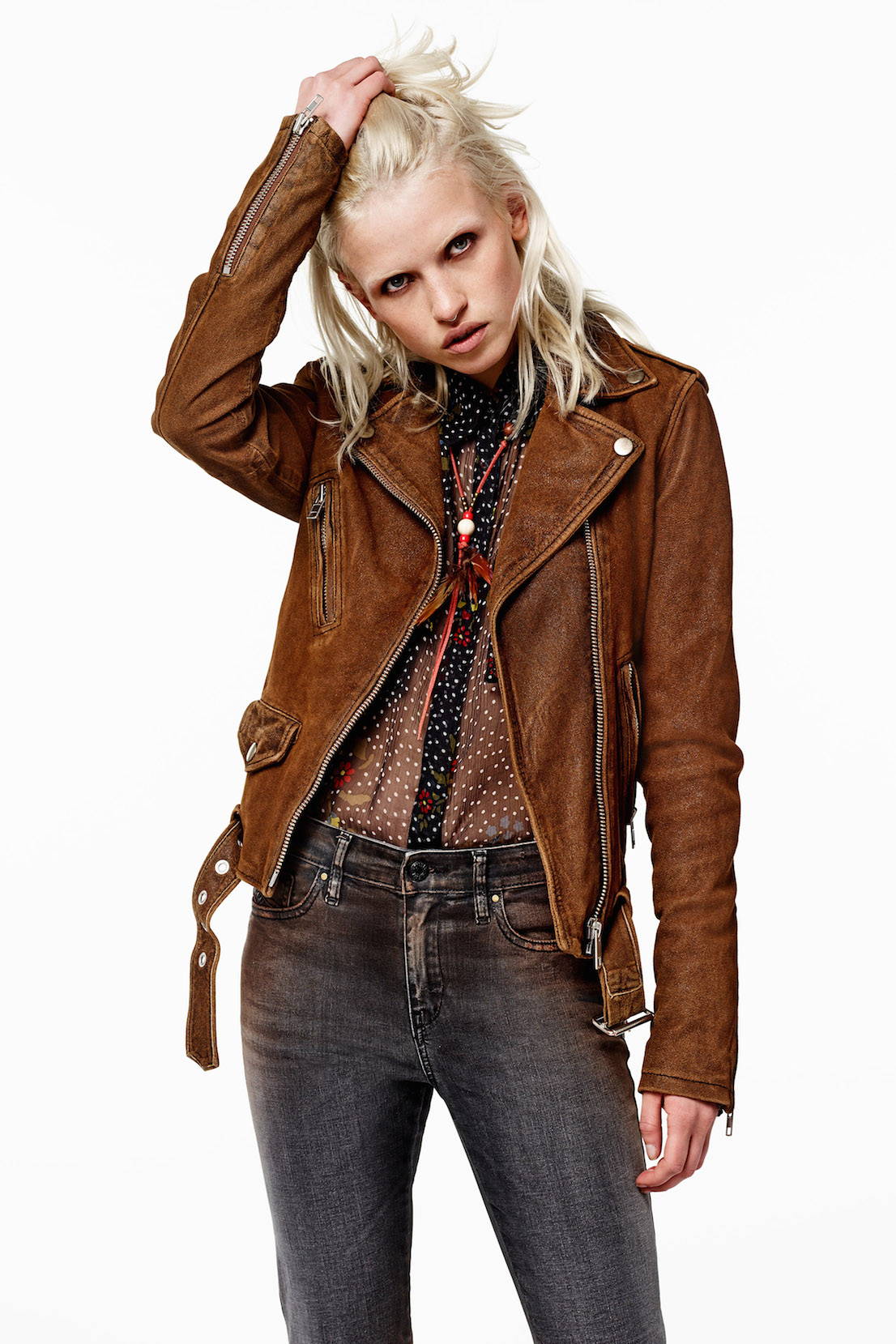
Diesel, Fall/Winter 2014.

Diesel, Fall/Winter 2014.
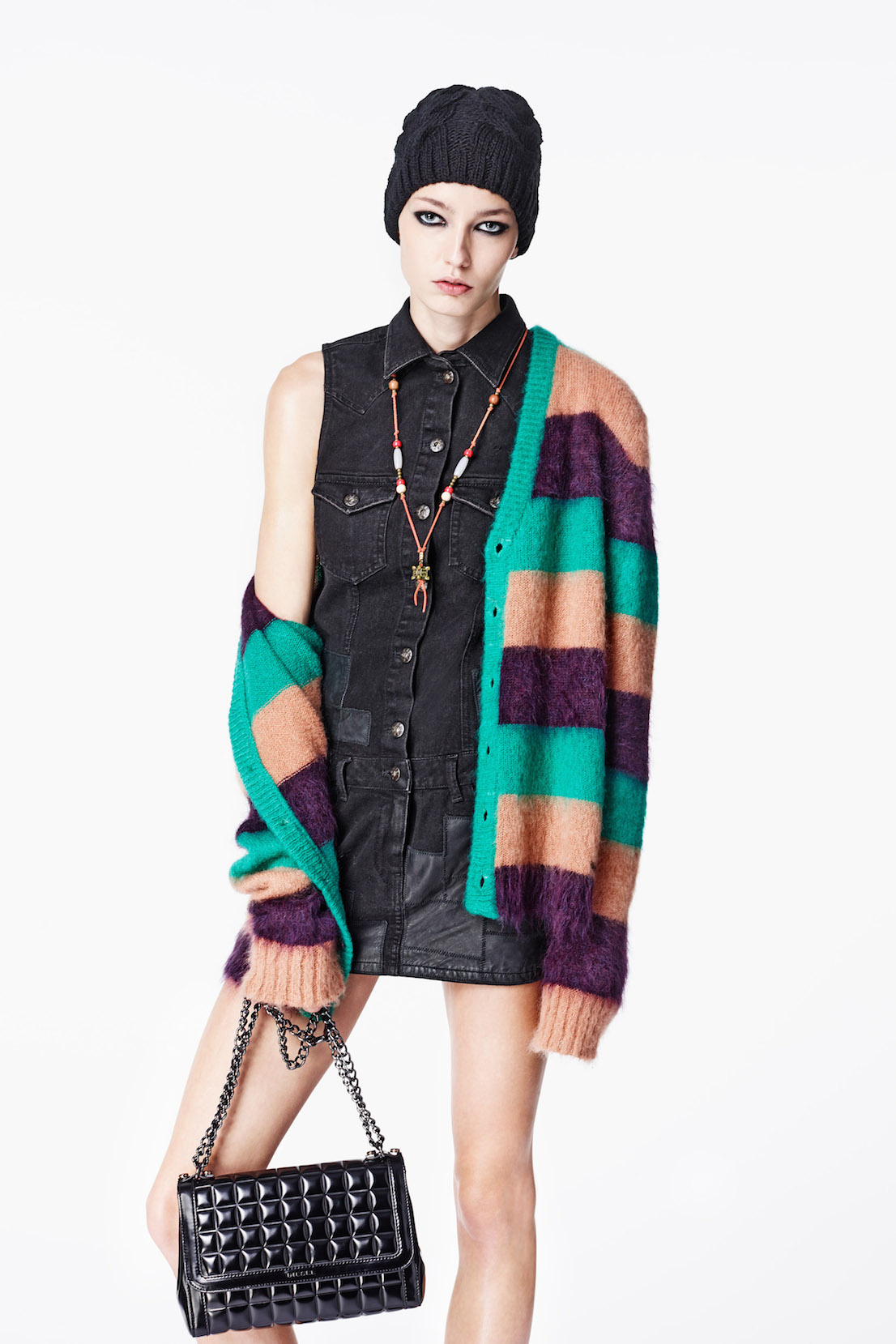
Diesel, Fall/Winter 2014.

Diesel, Fall/Winter 2014.
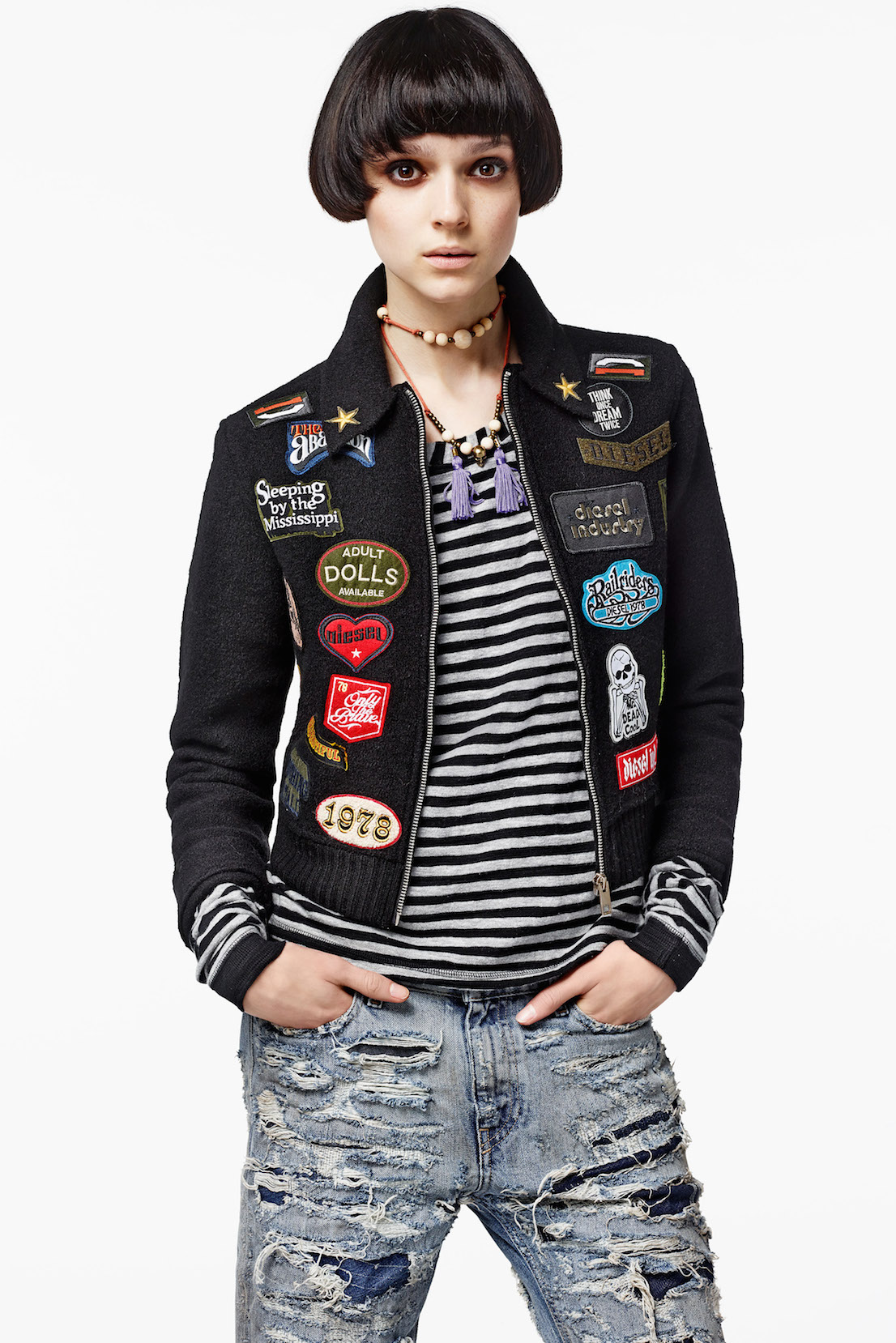
Diesel, Fall/Winter 2014.

Diesel, Fall/Winter 2014.

Diesel, Fall/Winter 2014.

Diesel, Fall/Winter 2014.

Diesel, Fall/Winter 2014.
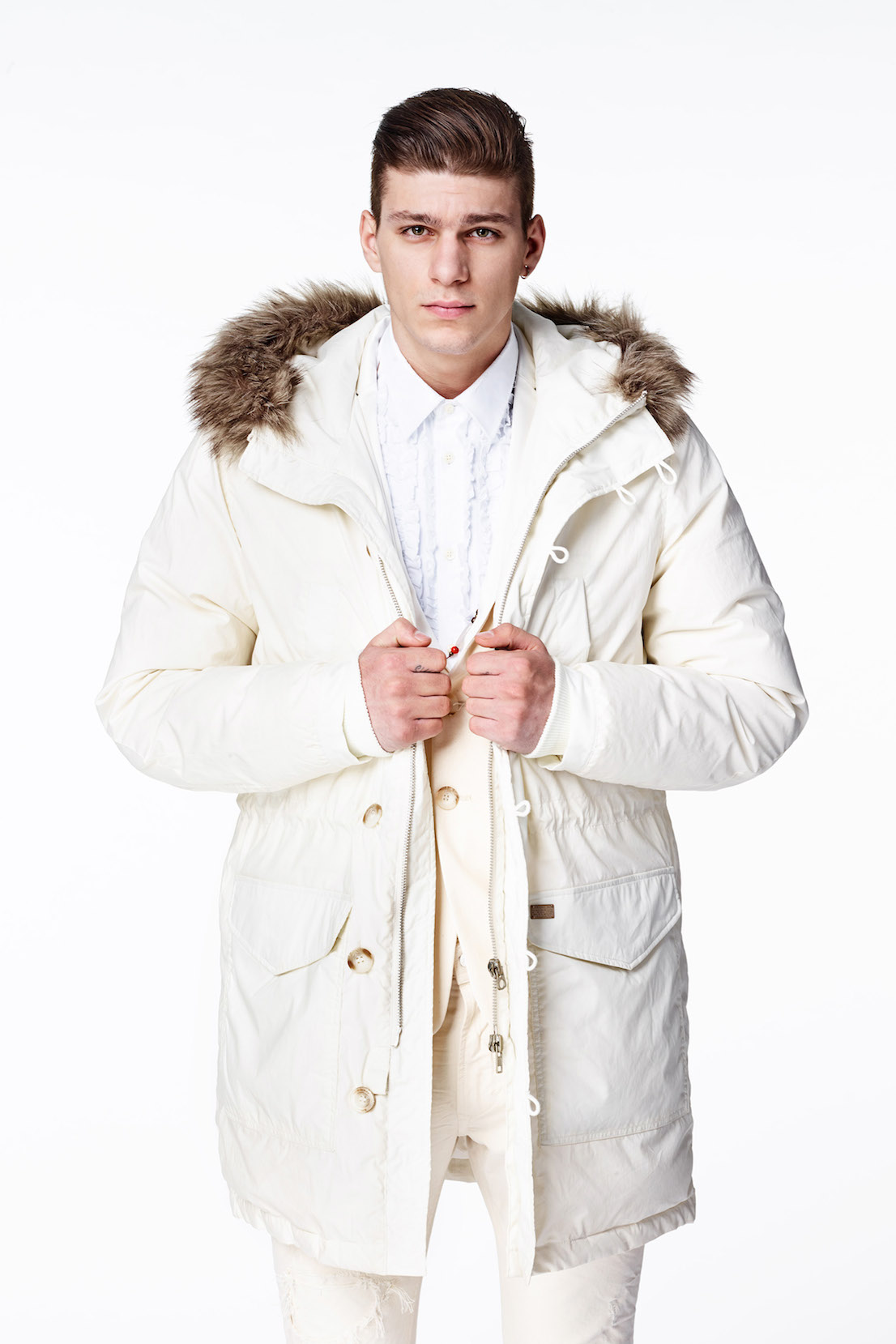
Diesel, Fall/Winter 2014.
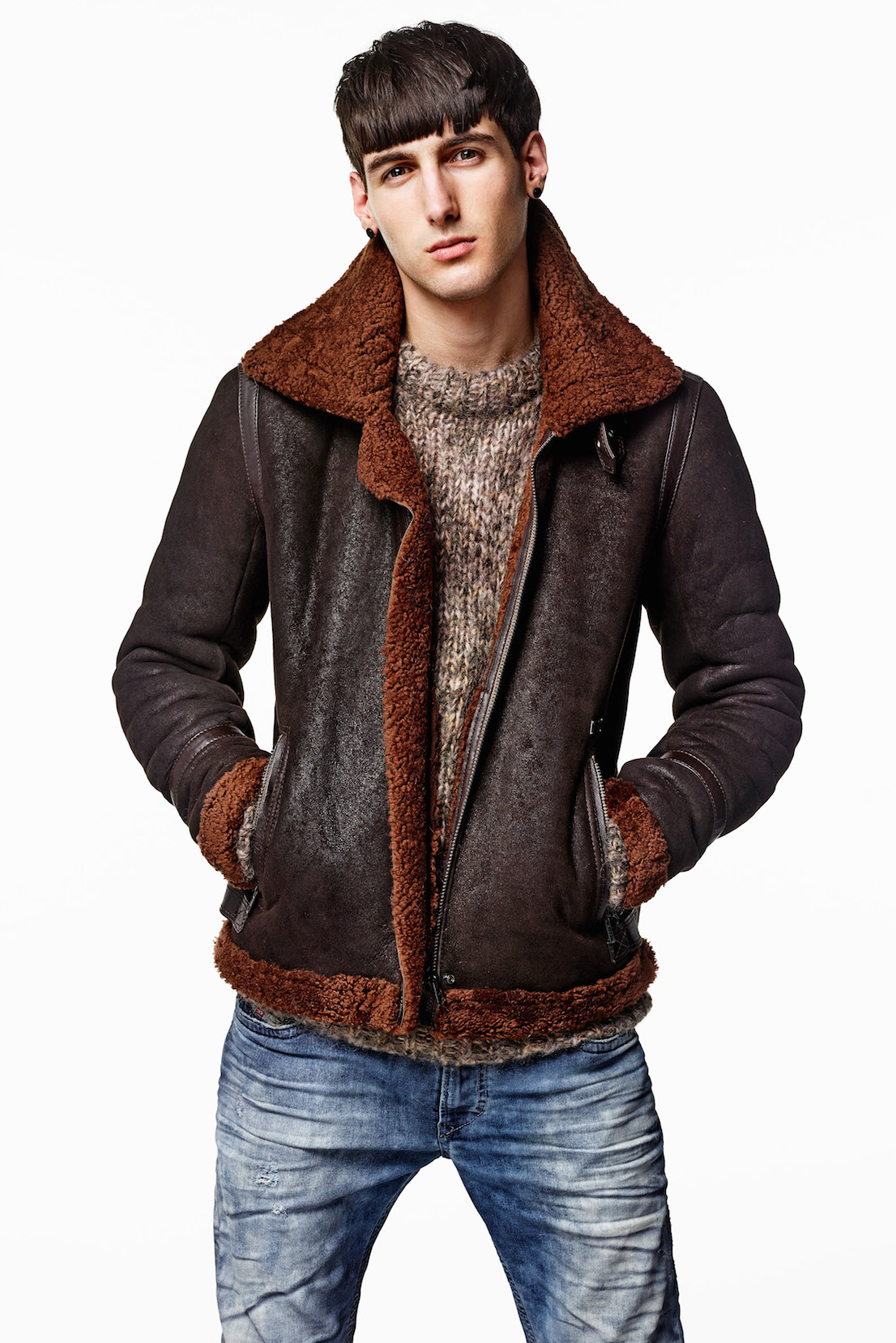
Diesel, Fall/Winter 2014.

Diesel, Fall/Winter 2014.

Diesel, Fall/Winter 2014.

Diesel, Fall/Winter 2014.

Diesel, Fall/Winter 2014.